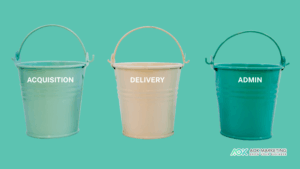Have you ever found yourself leaning towards buying a product priced at $9.99 instead of $10? This is a classic example of psychological pricing at work. The difference might appear minuscule, but its implications on a customer’s price perception are profound, making the cost seem considerably lower.
Psychological pricing isn’t confined to the palms of retail businesses. It extends to the sprawling landscape of service-based industries too. Subscription-based companies often employ this strategy, pricing their services at $19 per month instead of an even $20.
The ramifications of implementing psychological pricing are plentiful. It propels your sales and amplifies the perceived worth of your product or service. Furthermore, it bestows you with a competitive upper hand over your competition which steers clear from this approach.

Understanding Psychological Pricing
Psychological pricing, or charm pricing, is a time-tested strategy involving minor tweaks in the pricing structure of products or services to sway consumers’ perceptions and purchasing behaviors. This fascinating concept rests on the belief that specific price points can have a profound psychological impact on consumers.
Tapping into Cognitive Biases with Psychological Pricing
The craft of psychological pricing taps into the cognitive biases that shape our purchasing decisions.
A pervasive bias is our inclination as consumers to pay more attention to the first number on a price tag, a psychological phenomenon demonstrated when we view a product priced at $9.99 as conspicuously less expensive than one priced at $10 – a mere price difference of one cent. The underlying explanation is our minds interpret $9.99 as $9, thus making it significantly cheaper than $10.
The prevalence of psychological pricing is noticeable across various industries. Retailers are particularly adept at employing charm pricing by setting their prices at $19.99 or $99.95 instead of a rounded $20 or $100.
The travel industry is not far behind, as package deals are habitually offered at $499 instead of $500, making vacations appear more budget-friendly. Real estate is a surprising industry that utilizes this pricing strategy, where houses are often listed at $299,999 instead of $300,000.
Harnessing Psychological Pricing to Drive Sales
With the knowledge of psychology propelling these pricing strategies, businesses can skillfully manipulate customer perception and promote sales. Despite the actual monetary difference being negligible, the psychological impression can be substantial – a facet business should always bear in mind.
Understanding and leveraging the psychological pricing concept can transform how businesses market their products or services. The subtle art of making small adjustments can enhance customer perception of affordability and value. Increased comprehension of this strategy can help businesses set enticing price points that resonate with consumers’ inherent biases and significantly boost sales.
Harnessing the intriguing phenomenon of cognitive biases with the shrewd application of psychological pricing strategies is a testament to the intricate interplay between psychology and commerce, opening many opportunities for companies to drive growth and profitability.
Leveraging Psychological Pricing for Maximum Business Potential
The strategic use of psychological pricing can usher in a multitude of advantages for your business. We will explore how this can amplify sales, embellish perceived value, and confer a competitive edge.
Supercharging Sales
The principal advantage of psychological pricing lies in its power to rocket sales volume. By tagging products or services at $9.99 instead of the round figure of $10, businesses can leverage customers’ cognitive biases toward perceived value and affordability. The seemingly substantial price reduction can spur customers to act, leading to burgeoning sales figures.
Boosting Perceived Value
Psychological pricing extends beyond influencing buyer decisions. It also refines customers’ perception of your products or services. Take prestige pricing as an example, wherein prices are rounded up, like charging $200 instead of $199.99. This can engender a sense of superior quality or extravagance. Consequently, customers may consider your offerings more valuable, comprehensively bolstering your brand image.
Gaining a Competitive Edge
Standing out from competitors is not a choice but a necessity to differentiate and stay afloat in an oversaturated market. Psychological pricing can be the magic touch giving you a distinct advantage. By rendering your prices seemingly more appealing than your competitors, you can draw more customers and seize a larger slice of the market. It’s a straightforward yet efficient tactic to set your brand apart and stay one step ahead.
Adopting psychological pricing into your marketing plan can be transformative, setting the stage for booming sales, an enhanced brand image, and a razor-sharp competitive edge. It anchors a robust marketing strategy’s foundation, helping your business thrive in an increasingly competitive landscape.
Remember, these pricing strategies tap into the fundamental human psychology, convincing them they receive more value than they are paying for. It’s all about creating perceived value with a pricing strategy. Arresting their attention, pushing their emotional buttons, and triggering immediate action that’s the beauty of psychological pricing.
Implementing Psychological Pricing in Your Marketing Strategy
Integrating psychological pricing into your marketing strategy is an art, requiring a deep understanding of your customers, a willingness to experiment, and constant vigilance of the competitive landscape. Here’s how you can implement it effectively:
1. Understanding Customer Buying Behavior: The first step is to understand your customers’ buying behavior. What drives their purchase decisions? Are they bargain hunters, or are they after premium products? Knowing your customers will help you tailor a pricing strategy that resonates with them. For example, charm pricing might be more effective if your target audience is cost-conscious (e.g., $9.99 instead of $10).
2. Testing Different Pricing Strategies: Experimentation is key. Try different psychological pricing strategies and see which works best for your product or service. You could test charm pricing against prestige pricing or compare the effectiveness of price anchoring versus rounded pricing. Monitor sales and customer feedback to measure the success of each strategy.
3. Monitoring Competition and Their Pricing Strategies: Keep an eye on your competitors. What pricing strategies are they using? Understanding the competitive landscape can provide valuable insights into what might work for your business and help you stand out.
4. Case Studies: Looking at successful case studies can provide actionable insights. One such example is Apple, which has successfully used prestige pricing to position its products as high-quality and desirable. Another is Walmart, which uses charm pricing extensively to appeal to budget-conscious shoppers.
By understanding your customers, testing different strategies, monitoring the competition, and learning from successful examples, you can harness the power of psychological pricing to enhance your marketing strategy. Remember, the goal is not just to sell a product or service but to create a perception of value that resonates with your customers.
Common Psychological Pricing Techniques
The art of psychological pricing has given rise to various techniques, each designed to tap into the consumers’ subconscious and influence their buying decisions. Here are three common techniques used by marketers:
1. Charm Pricing: Also known as “odd pricing,” this technique involves setting prices slightly below a round number. For instance, pricing an item at $9.99 instead of $10. The idea is that customers focus more on the first number they see, so $9.99 is perceived as closer to $9, making it seem like a bargain.
2. Price Anchoring: This technique involves showing the original price next to the discounted price to highlight the savings a customer will make. For example, marking a product down from $100 to $80. This strategy anchors the higher price in the customer’s mind, making the discounted price appear even more attractive.
3. Prestige Pricing: This is the opposite of charm pricing. Instead of reducing the price by a few cents, the price is rounded up to give a sense of quality. For example, a luxury item might be priced at $200 instead of $199.99. High-end brands often use this strategy to convey a sense of exclusivity and prestige.
These psychological pricing techniques tap into different consumer perceptions and can be effective in the right context. The key lies in understanding your target audience and choosing the technique that resonates most with them.
Potential Downsides of Psychological Pricing
While psychological pricing can be a powerful tool, it comes with potential downsides that businesses must be aware of. Understanding these risks can help you avoid pitfalls and use this strategy effectively.
1. Risk of Damaging Brand Image: Psychological pricing can harm your brand image if not used correctly. For instance, constant discounting can make customers question the quality of your products. Similarly, if positioning your brand as high-end or luxury, using charm pricing (e.g., $9.99 instead of $10) could dilute your brand’s perceived value.
2. Desensitization Over Time: Consumers are savvy and, over time, may become desensitized to psychological pricing tactics. They might start to see through the pricing tricks and perceive them as manipulative, which could lead to decreased trust in your brand.
3. When Not to Use Psychological Pricing: There are also situations where psychological pricing might not be the best approach. For example, a few cents or dollars might seem negligible to consumers if you sell very high-priced items. Similarly, prestige pricing might be more effective if your target audience focuses more on quality than price.
While psychological pricing can be an effective part of your marketing strategy, it’s important to use it judiciously. Always consider your brand positioning, the nature of your product, and the characteristics of your target audience before deciding on your pricing strategy.
Final Thoughts
Psychological pricing is a potent tool in the marketer’s arsenal. It leverages cognitive biases to influence consumers’ perceptions and buying behaviors, potentially driving increased sales, enhancing perceived product value, and providing a competitive edge.
However, like any strategy, it’s not without its potential pitfalls. Used incorrectly or excessively, psychological pricing can risk damaging your brand image or desensitizing customers. Therefore, it’s critical to understand your target audience and test different strategies to find what works best for your business.
I encourage you to experiment with psychological pricing techniques in your own marketing strategies. Whether it’s charm pricing, price anchoring, or prestige pricing, each approach offers unique benefits that could help elevate your business.
For more insights into psychological pricing strategies and how they can be tailored to your business, feel free to delve deeper into this topic. The power of pricing is immense, and understanding the psychology behind it can open up new avenues for growth and success.
About The Author
Khalid Essam
Khalid is the Chief of Staff at AOK. He collaborates with a team of specialists to develop and implement successful digital campaigns, ensuring strategic alignment and optimal results. With strong leadership skills and a passion for innovation, Khalid drives AOK’s success by staying ahead of industry trends and fostering strong client and team relationships.





